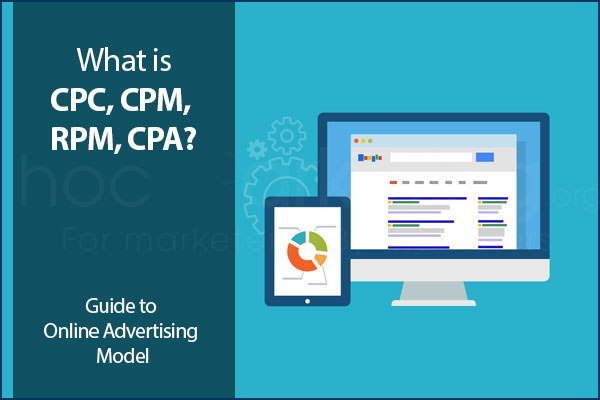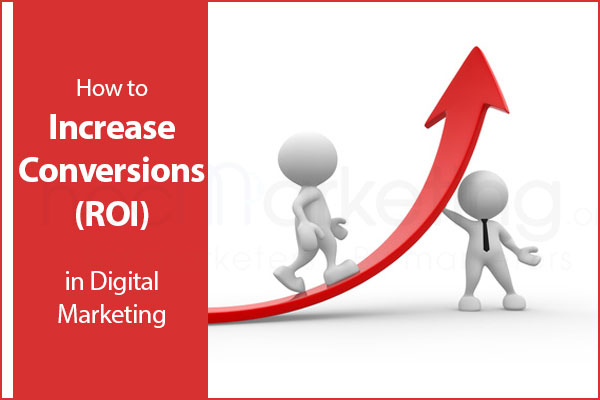
CPC, CPM, RPM, CPA: Guide to Online Advertising Model

There are many metrics to measure the success of your online ads. CPC, CPM, RPM and CPA are four common metrics for measuring ad campaigns that need to be explained. Read on for definitions and examples of how these measurements work together in successful campaigns!
Online advertising is a billion-dollar industry, and there are many metrics to measure the success of your online ads. Knowing which metric you should be using can make all the difference in what type of ad campaign you run. CPC, CPM, RPM and CPA are four common metrics for measuring ad campaigns that need to be explained. Read on for definitions and examples of how these measurements work together in successful campaigns!
What is an Online Advertising Model?
CPC, CPM, RPM and CPA are different from each other on their behavior. However, they share a same thing. That is they are all Online Advertising Models. An Online Advertising Model is a specific way to measure the volume, costs and success of an online ad campaign. Understanding how each model works will enable you to determine which model is right for your business, your needs and your products.
CPC: Cost per Click
CPC is probably the most well-known model for measuring online ad campaigns. CPC represents the average amount of money you would pay every time a visitor clicks on your ad. It is important to note that CPC can vary depending on where your ad appears, and in what context it appears (i.e., different sites may have differing values). For example, a restaurant may have to bid more money on CPC for a position on the first page of Google than it would for an ad on Craigslist.
CPC is common in pay-per-click search engine advertising campaigns (such as with Google Adwords). In these types of campaigns, the advertiser bids on keywords that will lead visitors interested in their product back to the advertisers site. CPC also occurs in banner and text ads, as well as paid listings on sites such as yahoo!
For example, the CPC for displaying your company banner on website A is 0.1 USD. In March 2021, there are totally 300 clicks on the banner, therefore, the total cost would be:
Total cost = Total clicks x CPC
=> Total cost = 300 * 0.1 = 30 USD.
CPM: Cost per Thousand Impressions
An online advertiser can purchase online ad space by the month or buy it by an impression – each time an advertisement is served to a user's screen. CPM is a metric that represents how much the online ad costs per one thousand impressions. It calculates how much money it would cost to run an ad campaign for 1,000 times.
CPM can be used with all the same media types as CPC (i.e., text ads, banners and paid listings). While you are not paying per click when using CPM, you can still pay a lower rate per impression and your ads will reach an audience more interested in what they are reading or seeing.
For example, the CPM for displaying your company banner on website B is 0.5 USD. In March 2021, there are totally 20,000 impressions of the banner, therefore, the total cost would be:
Total cost = ([Total impression] / 1,000) x CPM
=> Total cost = 20,000/1,000 * 0.5 = 10 USD.
RPM: Revenue per Thousand Impressions
Revenue per Thousand Impressions (RPM) is the revenue an advertising campaign generates for every thousand impressions. RPM represents how much money each 1000 ad impressions will generate in revenue for advertisers.
For example, your company website have run a Google Search Advertising campaign in July 2021. The total impression of the search ads is 15,000. Your company has estimated that there are totally 100 USD revenue generated from the campaign, therefore, the RPM of the campaign would be:
RPM = [Total revenue] / ([Total impressions] / 1000)
=> RPM = 100 / (15,000/1000) = 6.7 USD
CPA: Cost per Acquisition
CPA is one of the most widely used measures by advertisers to assess their marketing campaigns. It can be a great metric for businesses looking to make sales or generate leads in an online environment or both. CPA is the average amount it costs you every time someone makes a purchase on your site after viewing your ad (i.e., it includes purchases made by visitors who clicked on your ad).
CPA is a commonly used metric in pay-per-acquisition (PPA) online advertising campaigns. PPA campaign are those that aim to drive traffic to the advertiser's site for more than just brand awareness and web traffic, but ultimately leads and sales. In these types of campaigns, the advertiser bids on keywords that will lead visitors interested in their product back to the advertiser's site.
For example, you have run a Youtube Video Advertising Campaign and you have picked CPA as the model. The action you have chosen is downloading your mobile App. The amount of money you have to pay for each download (CPA) is 0.2 USD. In August 2021, there totally 200 downloads generated by the Youtube Ads. Therefore, your total cost would be:
Total cost = CPA x [Total actions]
=> Total cost = 0.2 x 200 = 40 USD.
Which Online Advertising Model should I choose when creating a campaign?
In practice, there is no absolutely better Online Advertising Model. It depends on the business you run, the goal of the campaign, the current marketing situation that you will pick a suitable Online Advertising Model.
For example, your company is going to launch a new product in 2022. There are 4 months before the launch of the product. Your company want to inform customers about the existence of the new product. In that case, the marketer should create Display Advertising Campaign (Banner, Video) and choose CPM as the advertising model. However, if your company want to get pre-orders from customers, then CPA should be chosen instead.
Conclusion
Choosing the right Online Advertising Model is an important part of creating a successful marketing campaign. Please remember that there is no absolutely better Online Advertising Model. It depends on what your goals are, how much time you have to market before launching, and other factors that may be unique to your company or industry. We hope this article has helped guide you in finding which model suits your needs best!











